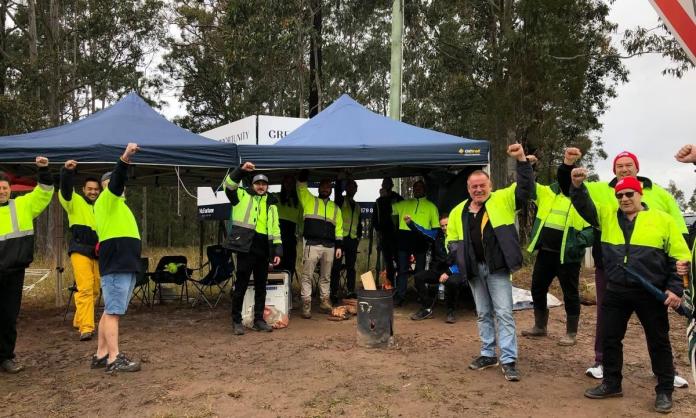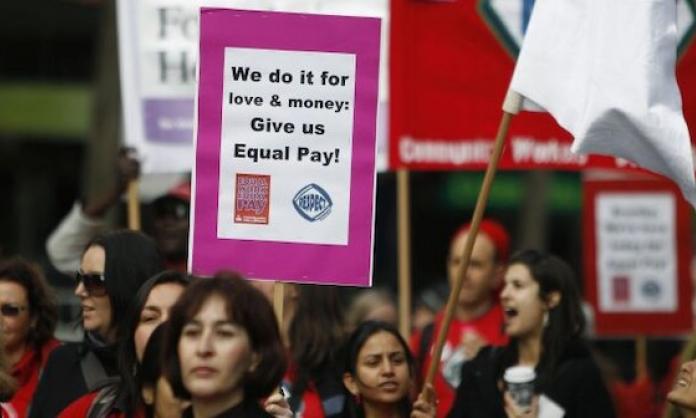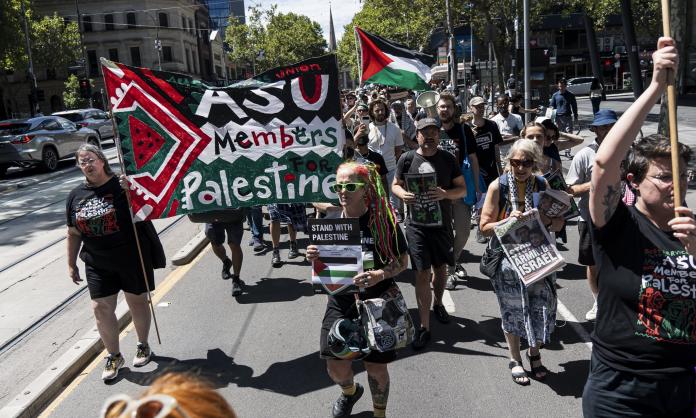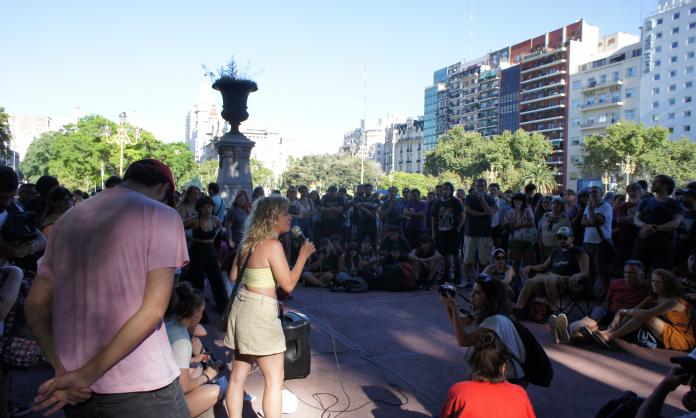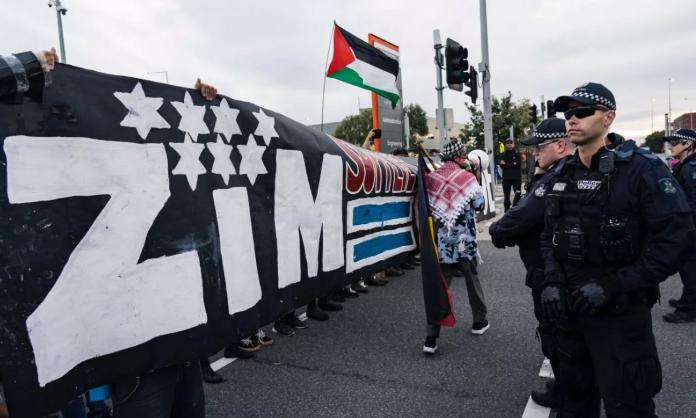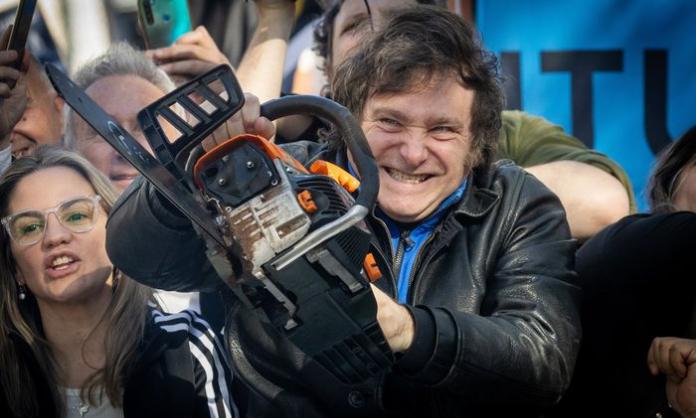Just down the road from Woolworths’ Wyong Regional Distribution Centre (RDC) in New South Wales is one of the biggest truck stops on the Pacific Motorway. Stopping there, you’d never realise that you’ve just passed a linchpin in the supermarket giant’s logistics network. In the last two weeks, this inconspicuous regional workplace shot into the news as the site of a defiant struggle by workers. On 13 August, their strike ended in a deal that quadrupled Woolworths’ initial pay increase offer and secured rights for casuals. Their achievement comes at a time when many are arguing that unions should collaborate with bosses and offer concessions to get through tough times. But the strike at the RDC has shown what can be won when workers fight instead.
“We needed to prove a point. We haven’t been on strike in fifteen years”, John, a forklift driver and United Workers Union delegate, says. “We finally stood together and, honestly, some of the days up here in the pissing down rain last week? Knee deep in mud and puddles and whatnot? We stood here shoulder to shoulder and at three o’clock in the morning I seen ’em dancing on the fucking road there mate—because they were united. And they’re still united now.”
By the end of the two weeks, the grass around the entrance to the industrial park had been carved into a deep brown trench, drying slowly in the sun. “We all made new friends on that picket line. I can’t even count how many I’ve made”, Mia (not her real name) says. “They were dancing out there in the rain and wind having the time of their lives.” John puts it a little differently: “We’re family now. We weren’t before”.
It had been a gruelling year prior to the win. Jeff Kirkman, the head delegate, says that workers didn’t stop even when the sheds filled with smoke from the “mega blaze” bushfires in December. When coronavirus panic buying emptied supermarkets of toilet paper and non-perishable foods, they worked overtime to restock them. “It was the volume equivalent of three Christmases, one after the other”, he says.
Management already make work in the RDC as hard as possible—in particular by enforcing unrealistic pick rates. Casual workers who don’t make the rate won’t get a shift the following day. For full-timers, it’s not much better. “They will check your record for the last six months and your pick rate has to be between 95 and 100 percent”, John says. “After six months of picking fuckin’ boxes and we’re talking 16 kilo boxes of drinks and bulk flour and all that kind of shit, your body just can’t keep up with it, mate. We’re breaking people left, right and centre.”
Pulling NSW out of a crisis caused by the just-in-time supply chains and being labelled essential workers might have left people at the RDC with the impression they deserved better than this. There’d been a lot of talk in the shed about the successes of a strike last year at Woolworths’ Minchinbury warehouse in Sydney. John says workers even felt competitive about it: “Minchinbury got 16 percent and they were already 8, 10 percent in front of us. So we needed to go out and try and play catch up”.
But instead of the 18 percent pay rise workers needed to bring them in line with their Sydney counterparts, Woolworths offered just 3 percent. When they walked out, the bosses responded with two weeks of lockouts, and undermined the strike by setting up a “pop-up transfer station” up the road at Berkeley Vale.
The strikers fought back. “We caused some chaos to the poor transport guys down at Berkeley Vale”, Mia says. A worker who was involved explains that the strikebreakers made the mistake of parking on a public road: “As soon as they disconnected that truck, we parked in front of it ... even when we blocked them in at Berkeley Vale, they went to the twin Caltexes here and started running out of there. So we sent a crew of boys over there—park ’em in. It’s a public street, you can park anywhere you want!” Woolies tried to move the work to Minchinbury, but workers there refused to scab on the strike, rejecting overtime work. Then a crew drove down from Wyong and parked-in the trucks for good measure.
Even when the only people out front of the RDC are union volunteers cleaning up on the last day of the strike, just about every passing car is honking in support. Cars have pulled up with pizzas, blankets, cupcakes, even firewood. John says that just about everyone in the area knows someone who’s worked in the RDC. So when workers won a new rule in their contract forcing Woolworths to offer permanent employment to casuals in order of seniority rather than pick rate, it was a win for the whole community. “When our children, when our cousins, when our brothers, when our husbands and wives come into this warehouse, they’re not gonna be going out in an ambulance with a fucked back, or a fucked neck or a fucked shoulder.”
By 6 August, management were offering 12 percent, but many workers wanted to keep fighting, including John. “We deserve the 18 percent ... ‘same job, same pay’ was the motto of the strike.” The decision went to a vote, but with a twist. Of 500 members, 300 were at the picket that morning, and the union organisers decided that the absentees would weigh the ballot towards accepting the deal. They needed 75 percent to stay out on strike: they got 60 percent. “A lot of disappointment came out of it”, Mia says.
For John, what matters is the bond of solidarity forged between workers. “Even though we’ve gone back in and it was a very close vote on both sides—I don’t think that’s changed that.” They’ll return to the RDC with memories of supporters turning up with hot pasties in the rain and of the strikebreakers’ vehicles parked-in at the iconic truck stop nearby. For Mia, the highlight was Hank, the dog John was fostering, the unofficial mascot and “dog delegate” of the picket, who was adopted for good by a union organiser before the end. But this strike isn’t just a historic win at a regional warehouse—it’s proof that the way forward for workers in this crisis is to fight and to win.




